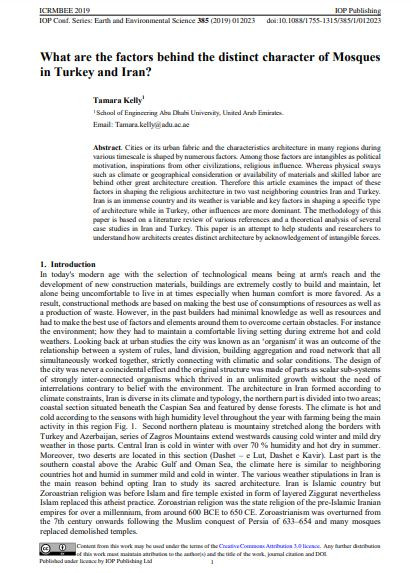
Cities or its urban fabric and the characteristics architecture in many regions during various timescale is shaped by numerous factors. Among those factors are intangibles as political motivation, inspirations from other civilizations, religious influence. Whereas physical sways such as climate or geographical consideration or availability of materials and skilled labor are behind other great architecture creation. Therefore this article examines the impact of these factors in shaping the religious architecture in two vast neighboring countries Iran and Turkey. Iran is an immense country and its weather is variable and key factors in shaping a specific type of architecture while in Turkey, other influences are more dominant. The methodology of this paper is based on a literature review of various references and a theoretical analysis of several case studies in Iran and Turkey. This paper is an attempt to help students and researchers to understand how architects creates distinct architecture by acknowledgement of intangible forces.
I agree to the terms outlined below:
You agree to upload and assign Mosqpedia Database the rights to use the content worldwide and in perpetuity across all current and future media platforms. Mosqpedia Database may edit, copy, adapt and translate your contribution.
The content will be distributed under the Creative Commons Attribution-Deed – Attribution-NonCommercial-NoDerivatives 4.0 International – Creative Commons
All data will be stored in line with data protection regulations.